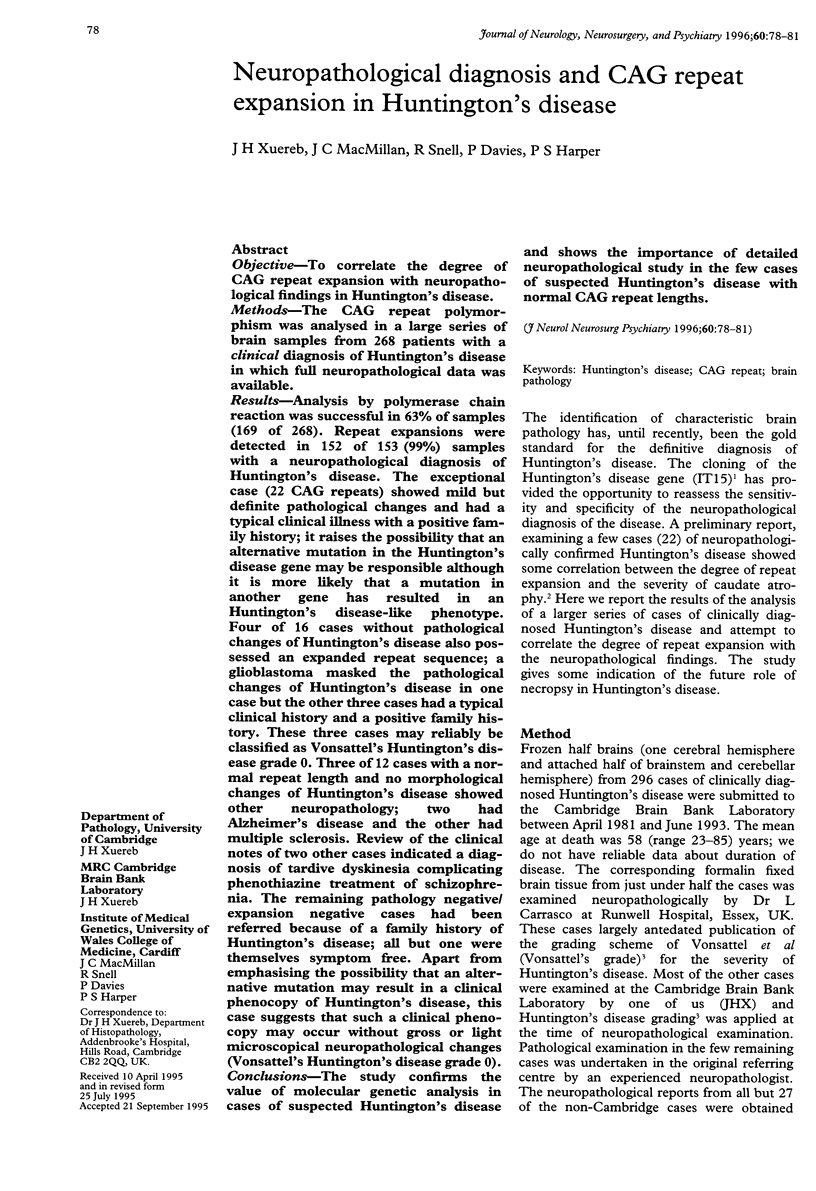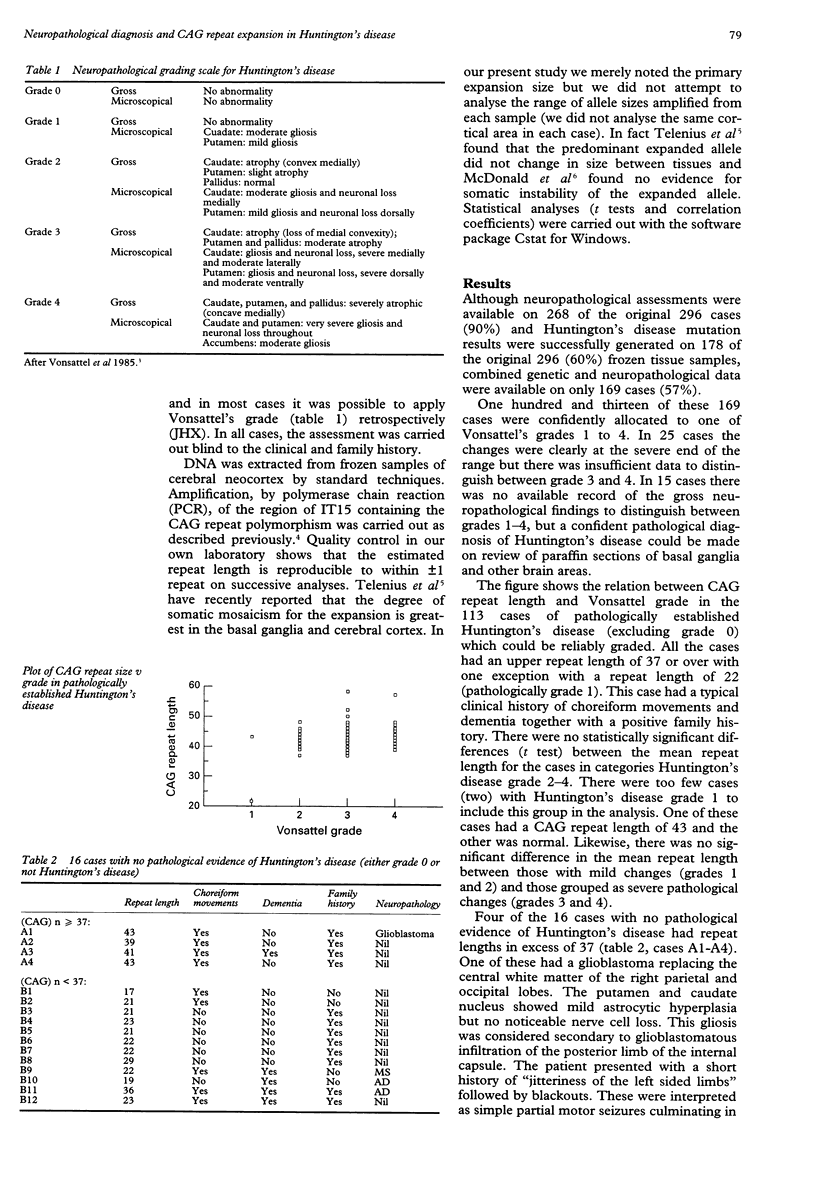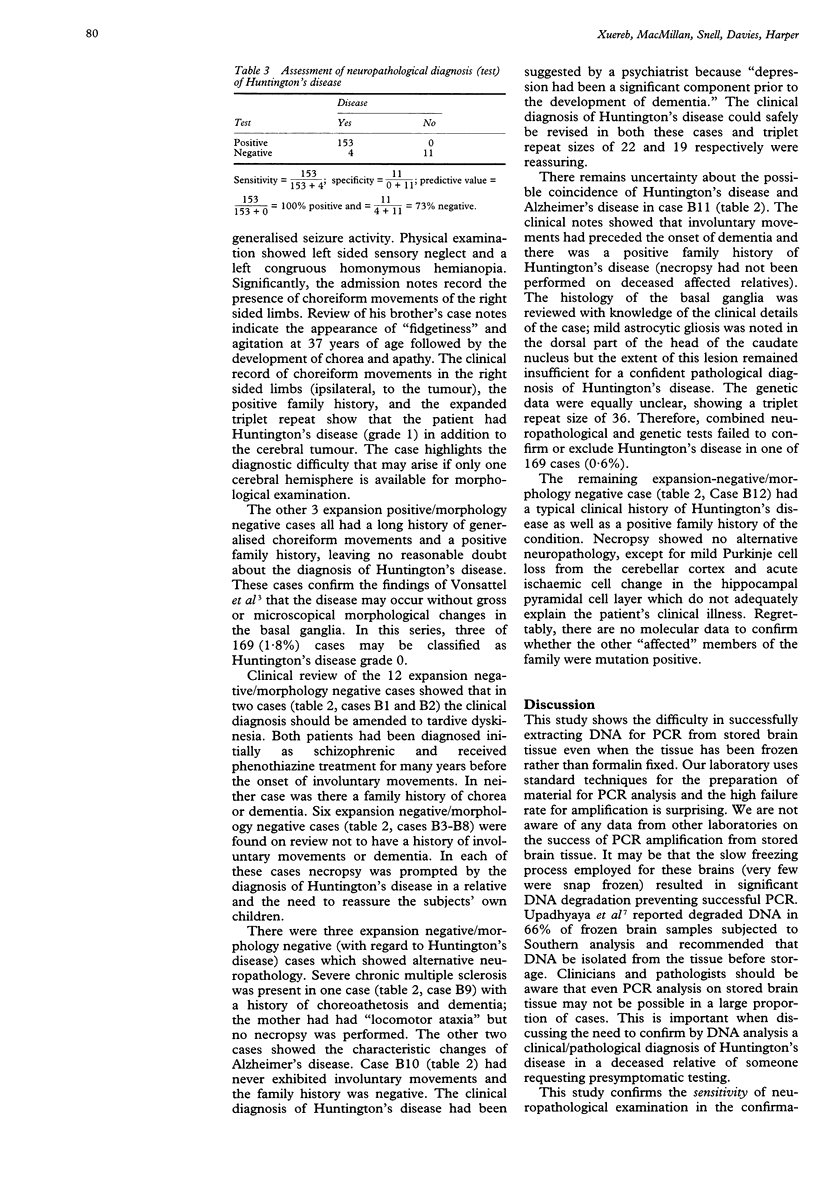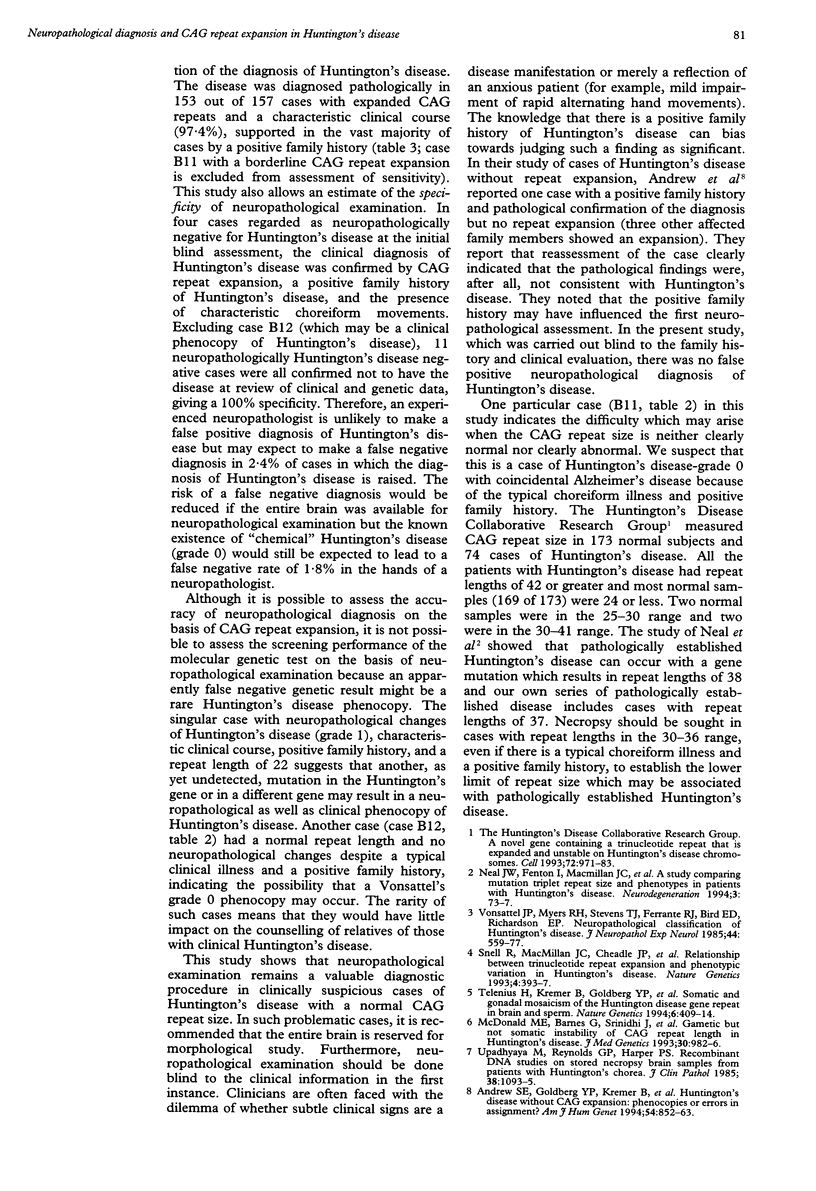Abstract
OBJECTIVE--To correlate the degree of CAG repeat expansion with neuropathological findings in Huntington's disease. METHODS--The CAG repeat polymorphism was analysed in a large series of brain samples from 268 patients with a clinical diagnosis of Huntington's disease in which full neuropathological data was available. RESULTS--Analysis by polymerase chain reaction was successful in 63% of samples (169 of 268). Repeat expansions were detected in 152 of 153 (99%) samples with a neuropathological diagnosis of Huntington's disease. The exceptional case (22 CAG repeats) showed mild but definite pathological changes and had a typical clinical illness with a positive family history; it raises the possibility that an alternative mutation in the Huntington's disease gene may be responsible although it is more likely that a mutation in another gene has resulted in an Huntington's disease-like phenotype. Four of 16 cases without pathological changes of Huntington's disease also possessed an expanded repeat sequence; a glioblastoma masked the pathological changes of Huntington's disease in one case but the other three cases had a typical clinical history and a positive family history. These three cases may reliably be classified as Vonsattel's Huntington's disease grade 0. Three of 12 cases with a normal repeat length and no morphological changes of Huntington's disease showed other neuropathology; two had Alzheimer's disease and the other had multiple sclerosis. Review of the clinical notes of two other cases indicated a diagnosis of tardive dyskinesia complicating phenothiazine treatment of schizophrenia. The remaining pathology negative/expansion negative cases had been referred because of a family history of Huntington's disease; all but one were themselves symptom free. Apart from emphasising the possibility that an alternative mutation may result in a clinical phenocopy of Huntington's disease, this case suggests that such a clinical phenocopy may occur without gross or light microscopical neuropathological changes (Vonsattel's Huntington's disease grade 0). CONCLUSIONS--The study confirms the value of molecular genetic analysis in cases of suspected Huntington's disease and shows the importance of detailed neuropathological study in the few cases of suspected Huntington's disease with normal CAG repeat lengths.
Full text
PDF



Selected References
These references are in PubMed. This may not be the complete list of references from this article.
- Andrew S. E., Goldberg Y. P., Kremer B., Squitieri F., Theilmann J., Zeisler J., Telenius H., Adam S., Almquist E., Anvret M. Huntington disease without CAG expansion: phenocopies or errors in assignment? Am J Hum Genet. 1994 May;54(5):852–863. [PMC free article] [PubMed] [Google Scholar]
- Snell R. G., MacMillan J. C., Cheadle J. P., Fenton I., Lazarou L. P., Davies P., MacDonald M. E., Gusella J. F., Harper P. S., Shaw D. J. Relationship between trinucleotide repeat expansion and phenotypic variation in Huntington's disease. Nat Genet. 1993 Aug;4(4):393–397. doi: 10.1038/ng0893-393. [DOI] [PubMed] [Google Scholar]
- Telenius H., Kremer B., Goldberg Y. P., Theilmann J., Andrew S. E., Zeisler J., Adam S., Greenberg C., Ives E. J., Clarke L. A. Somatic and gonadal mosaicism of the Huntington disease gene CAG repeat in brain and sperm. Nat Genet. 1994 Apr;6(4):409–414. doi: 10.1038/ng0494-409. [DOI] [PubMed] [Google Scholar]
- Upadhyaya M., Reynolds G. P., Harper P. S. Recombinant DNA studies on stored necropsy brain samples from patients with Huntington's chorea. J Clin Pathol. 1985 Oct;38(10):1093–1095. doi: 10.1136/jcp.38.10.1093. [DOI] [PMC free article] [PubMed] [Google Scholar]
- Vonsattel J. P., Myers R. H., Stevens T. J., Ferrante R. J., Bird E. D., Richardson E. P., Jr Neuropathological classification of Huntington's disease. J Neuropathol Exp Neurol. 1985 Nov;44(6):559–577. doi: 10.1097/00005072-198511000-00003. [DOI] [PubMed] [Google Scholar]


